

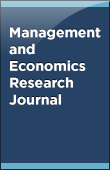
10.18639/MERJ.2023.9900083
Review Article
Dec 26, 2023
The book builds on an important issue of talent acquisition and management in the South African region. Particularly, the focus of different chapters is on the challenges faced in the education system of South Africa. Tracing the developments through the school system to the application of Maslow’s Need Hierarchy theory and entailing other such issues, a comprehensive outcome is suggested for improving the efficiency and effectiveness of the people involved in institutions. In the post-COVID-19 world, a new era of competition has been unleashed, including the employees’ decisions; one of the chapters entitled “Buy, Build, or Borrow a Talent” highlights the contemporary issue. The post-COVID-19 scenario of the world is focused on Industrial Revolution 4.0, and the book addresses the challenges and issues of job security and its impact on talent acquisition. The chapters in the book serve a great need of the world grown out of the pandemic, addressing issues pertaining to organizational culture in the context of the changing scenario. As a research-based book, each chapter considers an important element of talent management from a different perspective. The chapters will keep readers intrigued by the recent pieces of evidence linked with fundamental concepts and conventional theories of human behavior.
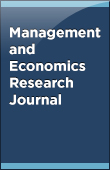
10.18639/MERJ.2023.9900082
Original Research Article
Nov 17, 2023
This paper investigates the extent to which the national economic initiatives introduced in post-apartheid South Africa were successful, why they were removed and why they were unsustainable or indefensible. In order to address the research questions, this study used a qualitative design involving the views of government officials who participated in the formulation of national policies. A total of six officials for each strategy (RDP, GEAR, ASGISA, NGP, NDP, and DDM) were sampled purposively in order to generate rich information on the performance of each policy considered and the decision to replace the policy. A semi-structured survey form was developed for this purpose. The study results show that none of the economic strategies were able to change the trajectory of South Africa’s economic development decisively. The key reasons are the removal of the economic strategies before they achieved the stated objectives potential, the inability to adjust and refocus strategies continuously, and a lack of implementation and monitoring capacity. The study contributes to the understanding of how South Africa’s economic development strategies performed and why they were removed. This informs future approaches to the development and management of economic strategies. The findings suggest that there must be sound and consistent public management to drive and coordinate implementation in order for economic development initiatives to be effective.
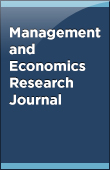
10.18639/MERJ.2023.9900081
Original Research Article
Nov 14, 2023
The global role of outbound logistics in supply chain processes and supply chain distribution cannot be overemphasized. Reviewed literature has shown that empirical tests have been done in relation to outbound logistics and profitability. However, minimal research work has been done on establishing the link between outbound logistics and profitability, particularly among sugar manufacturing companies in Kenya. Semi-systematic review was utilized using secondary data.. The literature reviewed in this study was in regard to sugar manufacturing firms in Kenya published between 2011-2021. The philosophy guiding this study was positivism which is a deductive approach. The review established a significant positive influence of outbound logistics on the profitability of the firms. Evidence links the profitability of sugar manufacturing companies in Kenya and outbound logistics. It was recommended that the firms enhance their focus on outbound logistics in order for their profitability to continue to improve. Researchers can increase activity on this subject and context.
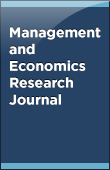
10.18639/MERJ.2023.9900080
Original Research Article
Jul 14, 2023
Using the qualitative approach, the study sought to explore the challenges of managing millennials in the hospitality industry, with a focus on Simbisa Brands Limited. An in-depth interview guide and documentary review were used to collect data, with a sample size of twelve participants. According to the findings of the study, Simbisa Brands' management faces insubordination challenges when dealing with millennials within their organization. It was also observed that excessive social media use by young employees, economic challenges, and overburdened workloads all have an impact on their productivity. Recommendations were that Simbisa Brands management would deal with insubordination by seeking the services of an employment law expert for quick and impartial advice. Importantly, staying organized can help an organization handle a heavy workload by streamlining the process of finding information and making decisions. The organization can also implement a planner system that displays its workload at a glance. Researchers also recommend that Simbisa Brands implement structural reforms that increase work autonomy and flexibility for its millennial employees. Future research could look at private and public sector organizations and use a mixed-method research approach to overcome the limitations of using only one research strategy.
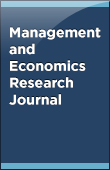
10.18639/MERJ.2023.9900079
Original Research Article
Jun 25, 2023
The health sector in any country is the greatest pillar of wealth generation. The life of citizens and by extension the economy depends largely on an effective and efficient health care system. A harmonious workplace that guarantees satisfaction of workers and employers aspirations is essential for enhanced services provision in the public health sector. Industrial harmony comprises of industrial democracy, employee loyalty, and shared vision. Since devolution of healthcare services in 2013, the Kenyan devolved public health sector has been affected by frequent short and often localized health workers’ industrial actions. The dilemma of the right of employees to industrial action and the citizens’ right to health care are two delicate and conflicting constitutional provisions that continue to elude policy and legislative environment. Industrial action is a protected right that every employee enjoys, however, there is need for a balance between the protection of these rights and the need to guarantee essential public services in order to safeguard citizens and their well-being. This study sought to determine the influence of collaborative stakeholder engagement on industrial harmony in the devolved public health sector in Kenya. The study used pragmatic research paradigm. The study research design was mixed methods research methodology. The study population was 3,355 medical workers in level 5 county referral hospitals, in the Central Economic Regional Bloc (CEREB). The study selected 351 respondents using stratified random sampling. In addition, 10 medical superintendents, 10 secretary generals from KMPDU and 10 from KNUN respectively were selected for participation in the study through purposive sampling. Data was collected using questionnaires and interviews. Data analysis involved both qualitative and quantitative analysis. Qualitative data collected through interview guide was analyzed using content analysis technique. Quantitative data collected using the questionnaire was analyzed using descriptive and inferential statistics. Descriptive statistics comprised means and standard deviation while inferential statistics comprised simple linear regression to depict the relationship between the study independent variables and the dependent variable. The study established that collaborative stakeholder engagement had a positive and significant influence on industrial harmony (=.925, p-value=.000). The study concluded that collaborative stakeholder engagement enhances industrial harmony. The study recommends the expansion of communication/information sharing system so that workers can channel their issues without being victimized as well as establishment of effective internal dispute resolution mechanisms. The devolved healthcare facilities also need to build trust among healthcare workers by being considerate of their work welfare as well as involving them in policy formulation exercises.

10.18639/MERJ.2023.9900077
Original Research Article
May 01, 2023
It has been reported that workplace violence occurs every other day, and this is quite a misnomer. It ranges from ordinary verbal abuse to getting physical among employees. All forms of workplace bullying should be shunned and completely rebuffed towards creating a more enabling and healthier working environment for employees, as this is the only way to actual growth and productivity of an organization. A reasoning for this study is to acquaint managers with what workplace bullying is all about so that they can take full responsibility for their employees in a way to clamp down on the hazard and provide a better working environment for their employees. Organizations should take conscious efforts by looking into some of the practices and cultures that are operational in their workplace and annul some of them that are promoting workplace bullying. This qualitative study aimed to copiously probe into the phenomenon of workplace bullying, in a way to adequately study the style and pattern, via the use of 1050 questionnaire responses from employees in Cyprus. Results revealed that bullying is more rampant in the workplace, between the superiors/ managers and their junior workers. Junior workers are subjected to different forms of ill-treatment from the superiors like hurling abuses at them, making them work overtime, out of which job intimidation takes the lead. Female workers are more vulnerable to workplace bullying than their male counterparts -but it’s noteworthy to say that the bully can either be a male or female- the question of who bullies is not determined by gender. Employee responses may not however, reflect reality due to the nature of the study and the subtlety of the issue. Further studies can focus in which segments of the industry workplace bullying occurs more frequently, as well as in legislative matters.
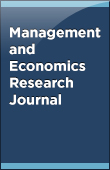
10.18639/MERJ.2023.9900078
Original Research Article
Apr 28, 2023
This research examined student perceptions of asynchronous discussion boards using the focused group methodology using an applied research approach. The research purpose was to explore what online students perceive to be worthwhile discussion board content and interactions in online college courses. Ultimately, the goal was to add to the growing body of literature that fosters a deeper understanding of how to improve both teaching strategy and instructional design and increase both the quality and quantity of student participation. The researchers recruited volunteers from closed undergraduate courses to participate in the survey. Emerging themes included concerns over busy work, excessive time requirements, overly structured discussion boards, and the importance of quality, relevance, professor involvement, and respect. To improve participation, teaching strategy, and instructional design for online courses, each of these themes should be addressed as part of the discussion board design and in the online classroom.
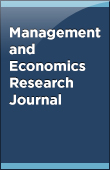
10.18639/MERJ.2023.9900076
Original Research Article
Mar 17, 2023
Different organizations worldwide are increasingly turning to human resource analytics to improve their strategic human resource and business goals. Specifically, this has been necessitated by advances in information technology in the corporate business world. Therefore, this advancement in information technology has heightened expectations and contributed to a very positive perception of human resource analytics. Using HRA to manage the human endeavor, on the other hand, is still marred by different implementation challenges owing to a lack of understanding and appreciation by the key stakeholders. Using an integrative synthesis, the researchers conducted an integrative review of refereed journal articles on HRA Implementation. A search from three major data banks turned up 133 410 hits and according to the search criteria, only twelve relevant articles were reviewed. Consequently, the number of articles in refereed journals and the research question addressed were used to categorize the articles. The articles were classified according to the following four questions: What exactly is HRA? How does HRA function? What are the consequences of using HRA? What factors influence HRA adoption? Researchers concluded that despite information connecting HRA adoption to strategic firm performance, academic research and HRA adoption are extremely low, resulting in a scarcity of evidence on the subject. All in all, such a revelation warrants further investigation through longitudinal and cross-sectional field surveys.
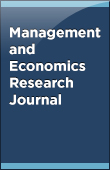
10.18639/MERJ.2023.9900075
Original Research Article
Feb 10, 2023
This study reviewed a number of empirical pieces of literature on cost-benefit analysis origin, advancements in its methods, and their applicability. This study applied semi-systematic review by relying on previous publications (20 publications were fully reviewed) in line with this study topic. The collected data was analyzed with the application of narrative synthesis. There are mixed ideas on the origin of cost benefit analysis. This study concludes that cost benefit analysis was first practiced in China in the 11th Century at the palace construction site. It then spread to the Bavarian Army. The French engineers embraced this technique in the execution of public works in 1708 before the American National Resource Committee incorporated it. Moreover, cost benefit analysis was authoritatively documented in the United States of America in the green book by a sub-committee on benefits and costs where principles and procedures for determining costs and benefits were clarified for reference. Other countries hence embraced Cost benefit analysis after its documentation in the United States. Advances in cost benefit analysis include; willingness to pay which exhibits the definite intention of clients in regard to how they value what they intend to purchase. That is, it expresses the degree the clients are ready to consume a particular product. On the other hand, conjoint analysis aids in determining willingness to pay, such that it offers a client an array of characteristics of a product which enables the client to settle on the most preferred product feature. It is shown that designing a conjoint technique is complex. Conjoint is tested at the individual level and the model utilized in collecting data is uniformly applicable assuming that all respondents have a similar modeled preference that does not match the real-life situation. Accordingly, information on product attributes could alternatively be obtained via a questionnaire or interview schedule in determining customers’ preferences and not necessarily through the use of conjoint. This review criticizes conjoint analysis as Cost Benefit Analysis method on the basis of its complexity and thus other data collection methods are offered like questionnaires and interview schedules. The study also confirms that advances in cost benefit analysis can be applied in all sectors of the economy since they have been empirically tested. It contributes to the comprehension of the origin of cost-benefit analysis, the advancement in cost-benefit methods, and critique on the methods of cost benefit analysis.

10.18639/MERJ.2022.9900073
Short Communication
Dec 31, 2022
Islamic Financial Services has been expanding all around the globe and has shown huge potential for developing economies. India, a developing economy, has shown less progress in Islamic Financial Services though there are several opportunities. The article examines the overview of the prospects of Islamic Financial Services in the Indian economy with a focus on regulations and conceptual understanding.
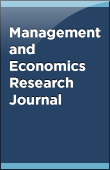
10.18639/MERJ.2022.1782409
Original Research Article
Dec 31, 2022
The objective of this study was to examine the relationship between liquidity and deposit insurance of Deposit-taking Microfinance Institutions (DTMFIs) in Low-Income Sub-Saharan Africa (LISSA). Several DTMFIs in the region defaulted in meeting withdrawals on deposits and collapsed with depositors’ funds. The failure of DTMFIs to be liquid has dire consequences such as contagion risk due to the sudden and unexpected deposit runs and oblivion of depositors’ funds, which further condemn the small savers into extreme poverty levels. Panel data from the Microfinance Information Exchange for the years 2006 to 2017 of 64 DTMFIs sampled across 18 LISSA countries was utilised. The estimated random effects results showed that explicit deposit insurance is positive and significantly related to liquidity. Additionally, the capital adequacy ratio and the Basel implementation dummy are positive and significant determinants of liquidity. The study concluded that designing and implementing explicit deposit insurance schemes mitigates liquidity risk in depository microfinance and maintaining adequate capital adequacy levels and implementation of Basel recommendations improves the liquidity positions of the LISSA DTMFIs. The study recommended formulation of deposit insurance policies that embrace microfinance deposits of all types and adherence to the Basel capital adequacy standards complements deposit protection in hedging liquidity risk.

10.18639/MERJ.2022.1716925
Original Research Article
Nov 21, 2022
Small, medium and micro enterprises (SMMEs) are recognized for promoting the livelihoods of the poor and for economic growth. The purpose of this study is to investigate how load-shedding affects the performance of SMMEs in the food industry in South Africa. The study was conducted in the Central Business District and Summerstrand areas in Gqeberha (formerly Port Elizabeth). The study is explorative and adopts a qualitative research design. The study population was made up of SMMEs owners in the food industry, with paid employees ranging from 5 to 200 people in the Central Business District and Summerstrand areas within Gqeberha (formerly Port Elizabeth). The purposive sampling method was utilized to select the study participants. The study revealed that load-shedding affected the capacity of SMMEs to provide quality products and services to their customers. To mitigate the effect of power outages, SMMEs adopted alternative power sources like backup generators and adjusted their operations to keep their businesses running. Also, the study confirmed that planned load-shedding enables SMMEs to plan and alleviate the effects of load-shedding. The study concluded that load-shedding disrupts the activities of SMMEs, which impedes customer satisfaction, leading to poor business performance.
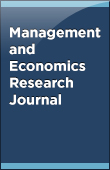
10.18639/MERJ.2022.9900070
Original Research Article
Sep 30, 2022
Economic integration within regional trading blocs yields enormous benefits in increased economic growth, trade, and investment. This study aims to analyze the causality and cointegration between GDP, foreign direct investment (FDI), and export for BIMSTEC nations using time series data from 1997 to 2020. The VAR model-based Granger Causality test is used. The results show a bi-directional correlation between FDI and economic growth and unidirectional causality between FDI and economic growth to exports. The findings indicate that attracting FDI to BIMSTEC nations boosts economic growth and exports.
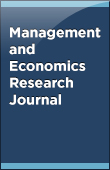
10.18639/MERJ.2022.9900071
Original Research Article
Sep 27, 2022
The commercial banks in Kenya have been recording declining performance over the recent past, with the lower-tier banks being the hardest hit. As a result, several banks in the lower-tier, such as Chase Bank, Dubai Bank of Kenya, and Imperial Bank, have been put under receivership. The collapse of banks does not give a good reflection of the sustainability of the banking system. Thus, the signals of poor financial performance need to be addressed promptly as the collapse of the banking system could also have a ripple effect on other sectors. The Kenyan banking sector is categorized into tier I, II, and III. The categorization is dependent on the size of the bank. The decline in profitability of the banking sector has affected tier II and III most. Also to note is that Tier one is made up of six giant banks that control close to half (49.9 percent) of the market, which begs the question as to whether the size of the bank has any influence on the performance of the banks. Therefore, this study sought to determine whether external financing influences Tier II and III performance and whether the bank size moderates this influence. Descriptive and explanatory research designs were employed in the study. The study population was 37 commercial banks in Tier II and III of the Central Bank's Lower-tier classification. Secondary data were adapted in the study for the years 2016 to 2020. After data cleaning, 26 banks were retained (70%) for further analysis. Data collected was analyzed by use of both descriptive and inferential analysis. Descriptive statistics included means, standard deviations, skewness, and Kurtosis, while inferential analysis included Multilevel Mixed Model Analysis and Hierarchical Multiple Linear Regression. The model coefficients show that equity has a positive and statistically significant relationship with the performance of lower-tier banks in Kenya measured using net profit margin (β=.229, p-value=.036<0.05). Further, the study found that size moderates the relationship between external equity and performance as an introduction of size in the model change R2 by .035 (p-value = 0.001). The study thus concludes that external equity capital positively influences the performance of lower-tier banks in Kenya, while size moderates the same. The study recommends that a bank evaluate when to use external equity funding, although external equity funding may be costlier. As a recommendation, lower-tier banks are encouraged to use external equity as this will improve their performance. Lower-tier banks are also encouraged to increase their asset base as their size moderates the banks' performance.
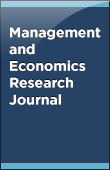
10.18639/MERJ.2022.9900056
Original Research Article
Jul 29, 2022
Special Issue S7: “Collegiality as a Management Practice”
This paper examines the collegiality of the Marxists and Naturalists of Social Justice theories toward ethical education in enhancing collegial management and leadership for community disability services for the benefit of community health and social work practices pertaining to post- COVID-19. Consequently, the collegiality of the Marxists and Naturalists of social justice theoretical ethical education was addressed within and linked with the four goals of the Global Social Work and Social Development Educational Commitment (GSDEC) for Action, thus, interconnecting the concepts above with the community disability services of health and social work practices and add clarity about their implementation for post- COVID-19 evaluation. The researchers argued that reimagining social justice education in improving the benefits of innovative and stimulating multisensory approaches pursued by higher education globally would expand the characteristics of collegial imagination and inventiveness. This paper suggests an effervescent hypothetical context concerning the critical elements desirable to galvanize and endorse collegiality in Marxists’ and Naturalists’ social justice ethical education for a post-COVID-19 era.